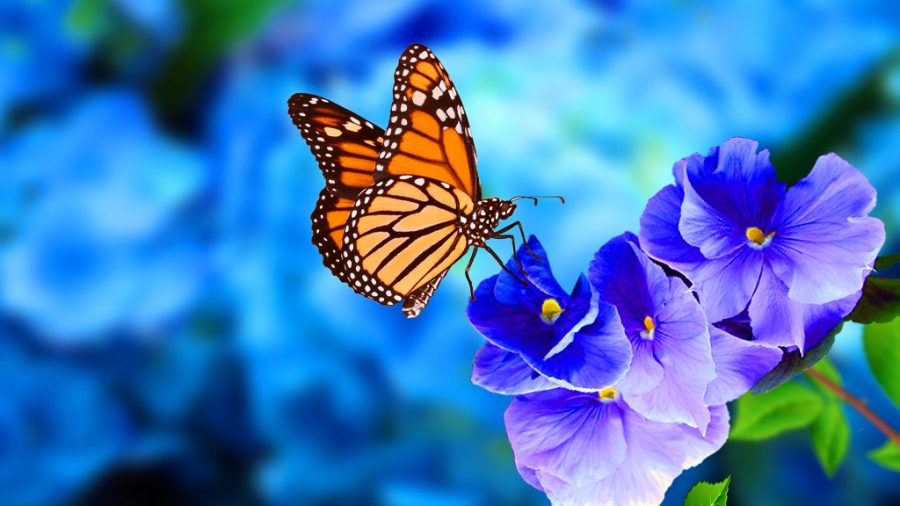Saving the Species
May 21, 2021
Background on Monarchs
The Monarch butterfly is slowly becoming extinct and something needs to be done. Butterflies are very important to our earth because they are one of the main pollinator groups, they pollinate important plants such as wildflowers which are responsible for the life of so many other species. Monarchs are also responsible for keeping the food chain alive as they provide a source of food for birds and other small animals.
Monarch life cycle
Monarch butterflies lay their eggs on the underside of the poisonous plant known as milkweed, which can be found all across Wisconsin and many other states. It is the host plant for Monarch butterflies and looks like a large green weed with many leaves. According to Green Planet, once the caterpillar hatches from its egg, it eats for almost 14 days straight; in that time, they grow up to 2,000 times their size. After they are done eating, the caterpillar goes into their ‘J’ formation. This is when the caterpillar hangs upside down from a safe location hidden from danger such as birds. The caterpillar then forms its well protected chrysalis, a beautiful green protein shell, and stays in it for around 8-15 days. Once the butterfly is ready to emerge from the chrysalis, the green coating turns clear and the small butterfly emerges from the tight exoskeleton of the chrysalis. After the butterfly emerges they need to fuse their tongue together. Their tongue is responsible for feeding them, so without it, they would not be able to survive. Then they need to dry out their wings so they can migrate down south to Central America in order to survive harsh winter climates. This whole process is called metamorphosis, which is when an insect transforms from a young age to significant adult age.
Monarch population
According to the San Francisco Chronical, Monarchs only have a 5% chance of survival in the wild and are rapidly decreasing in population. The reasons for the Monarch extinction are the loss of habitat, invasive bugs that infect them, climate change and toxic fertilizers.
What can we do to help?
You can help save the Monarch population by planting milkweed and native butterfly/pollinator plants in your yard or around your neighborhood. You can do this by creating a waystation. A way station is a safe habitat for monarchs to lay their eggs and recharge for their long migration to Mexico. You can cut down on the use of pesticides in your yard because it kills the milkweed and without it, the monarch butterfly would cease to exist. By doing these small actions you would help save the endangered species of the Monarch Butterfly.
How is Whitefish Bay helping?
The local Whitefish Bay Garden club is a well-educated group of gardeners that helps Whitefish Bay stay green and beautiful. They have created a monarch waystation, a rain garden overlooking Lake Michigan, and many more gardens using native pollinator plants. In addition, they have also planted milkweed and are trying to save the Monarch population before it’s too late.

